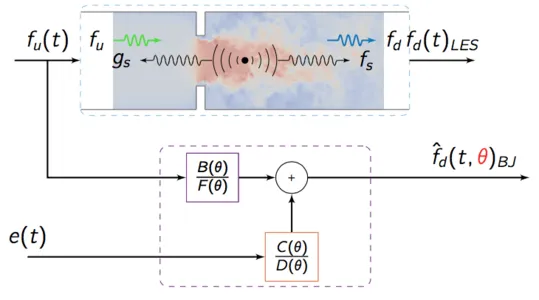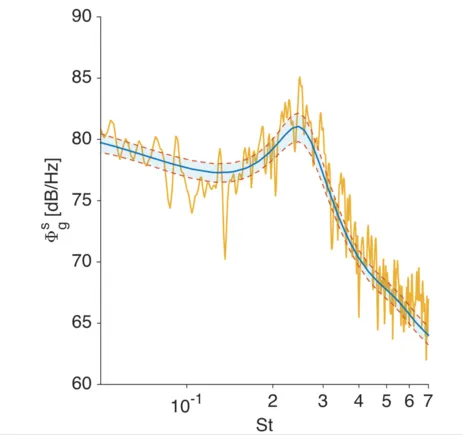Identification of Acoustic Scattering and Noise Sources in Ducted Flows
by Carlo Sovardi and Wolfgang Polifke
Motivation
The prediction and modeling of acoustic scattering and of noise sources in ducted flows is of fundamental importance in several industrial applications. Duct elements like valves, contractions or spoilers are often causes of intense noise generation. Moreover, if a proper acoustic feedback with the surrounding pipe system is established, those elements yield self-sustained acoustic oscillations which, if not properly damped, are often responsible of structural failures or of degradations of the system efficiency.
Therefore, the development of proper methodologies to model both the noise generation and the acoustic propagation in pipe system is of crucial interest in the recent research.
In order to achieve this task, the FlowAirS, European Union ITN project under the FP7 was established. “It is focused on generation, propagation and reduction of sound in flow ducts for transport, buildings and power generation.”
Methods
The method adopted to characterize the acoustic properties of different duct elements consist in a combination of Large Eddy Simulation (LES) and System Identification (SI) techniques, also known in the literature as the LES-SI method.
At first a broadband acoustically excited LES is carried out. Subsequently acoustic data series extracted from LES are post-processed by means of SI to identify both the acoustic propagation and the noise sources of the duct element.
In order to reduce the computational costs, a parametric approach based on the Box-Jenkins model is adopted (see Fig. 1). This affords a concurrent identification of noise sources and acoustic scattering by performing only a single acoustically excited LES.
The uncertainty, due to the finite length of the data series is assessed by means of confidence intervals. These are computed either by linearly propagating the uncertainties of the identified parameter of the Box-Jenkins model, or by performing Monte Carlo simulations.
Results
The present project deals with the characterization of the aeroacoustic properties of orifice elements.
Single and tandem orifices configurations are under analysis.
In Fig.2 the downstream transmission coefficient of the identified scattering matrix is reported.
In Fig.3 the noise sources modeled by means of the LES-SI method are compared with the noise power spectral density assessed with an acoustically non-excited LES
Selected Publications
[1] Sovardi, C.; Jaensch, S.; Silva, C.; Polifke, W.: Identification of Sound Sources in Internal ducted Flows: A Large Eddy Simulation -System Identification Approach. 21st International Congress on Sound and Vibration 2014, ICSV 2014, 2014
[2] Sovardi, C; Polifke, W: Acoustic characterisation of double-orifice configurations by means of an LES-SI approach. EuroNoise conference 2015, Maastricht 2015
Acknowledgment
This Project is financed by the European Commission, Marie Curie (ITN) project FlowAirS.
Project reference: 289352





